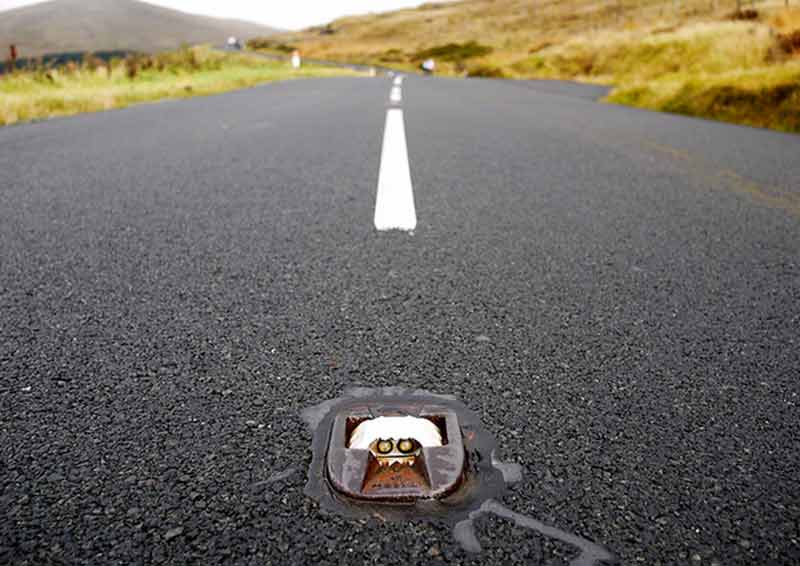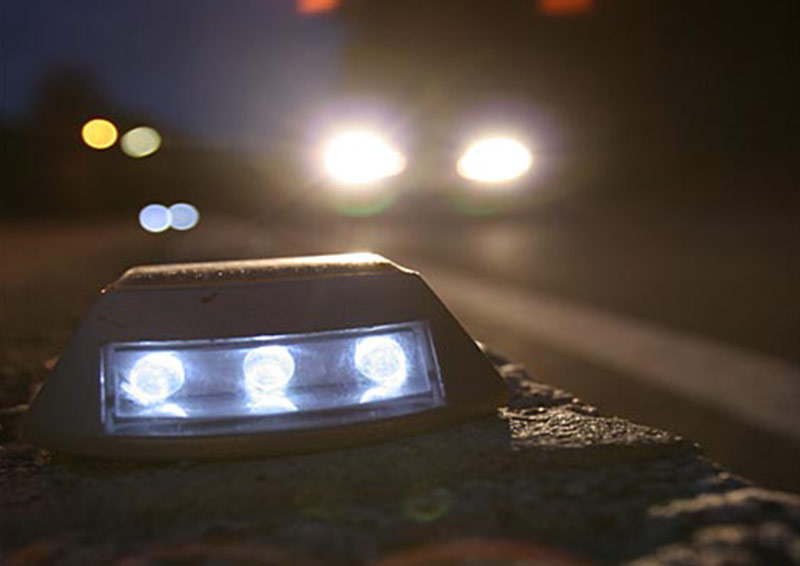Reflective road studs(so-called cat's eyes) were discovered in the 30ties of the 20th century in Great Britain by Percy Shaw who had been inspired by an image of the vehicle lamps reflected in cat's eyes. The first sets of cat's eyes road stud consisted of 4 glass spheres (2 on each side), mounted in a cast-iron housing. Further modifications resulted in 2 most commonly used products: reflective elements and light emitters, the so-called solar LED cat's eyes ).
 Solar road stud
Solar road stud is a product developed from reflective road studs, with high visibility that operates without electricity infrastructure in order to create safe traffic environment.
The solar cat eyes road studs are made of aluminium alloy and high durability polycarbonate material. They are ideal for permanent or temporary marking.
Solar road stud have a high degree of visibility during the day due to the prismatic reflective elements of various colours on both sides of the road stud. During the night, visibility is achieved due to the six high power LEDs that are automatically actuated by a sensitive photocell.

Each solar cat eyes converts solar energy collected to electricity, thanks to the solar panel integrated to its surface. The base is suitably shaped so as to present excellent adhesion with the ground. Material presents extremely high strength, and constant performance over time both on dry and wet roads. The bottom surface is flat and it integrates a fixation element.
Solar cat eyes road stud are used to mark road edges and centrelines. Solar road studs is mounted on the road surface and flashes to warn the drivers. It is equipped with long lasting LEDs and runs for many years without maintenance. The LEDs are designed to be visible from a distance of about 800 m.

